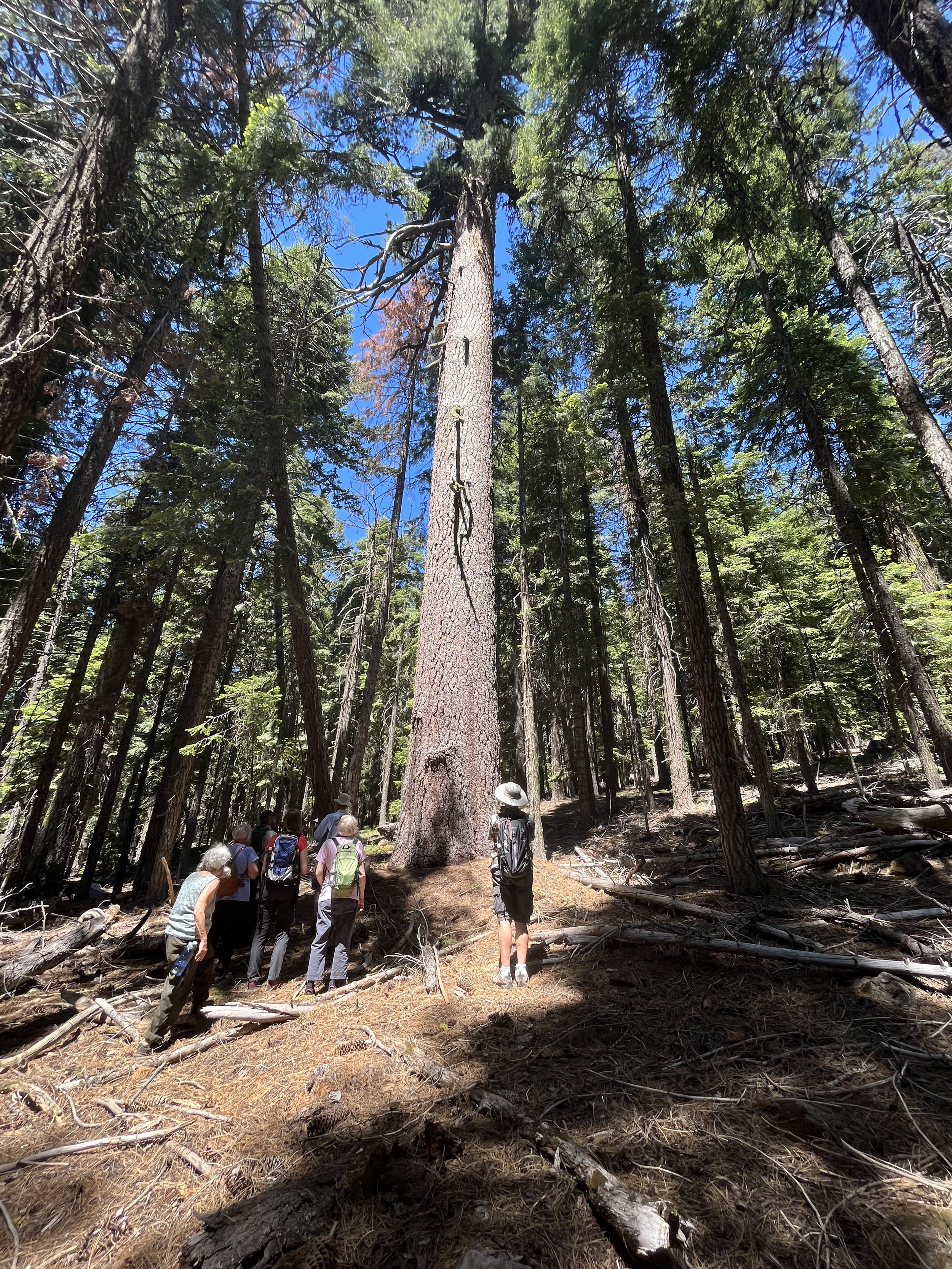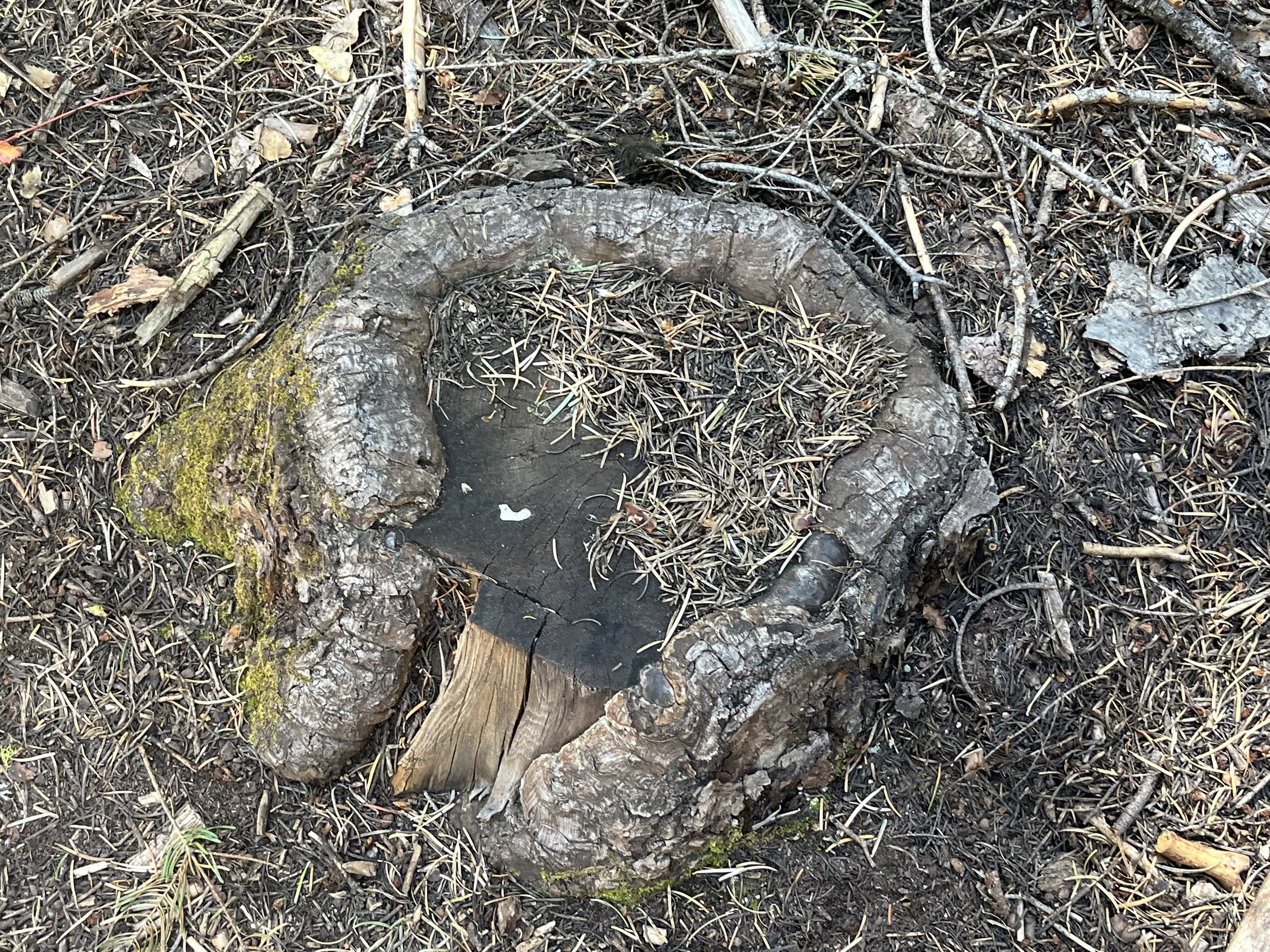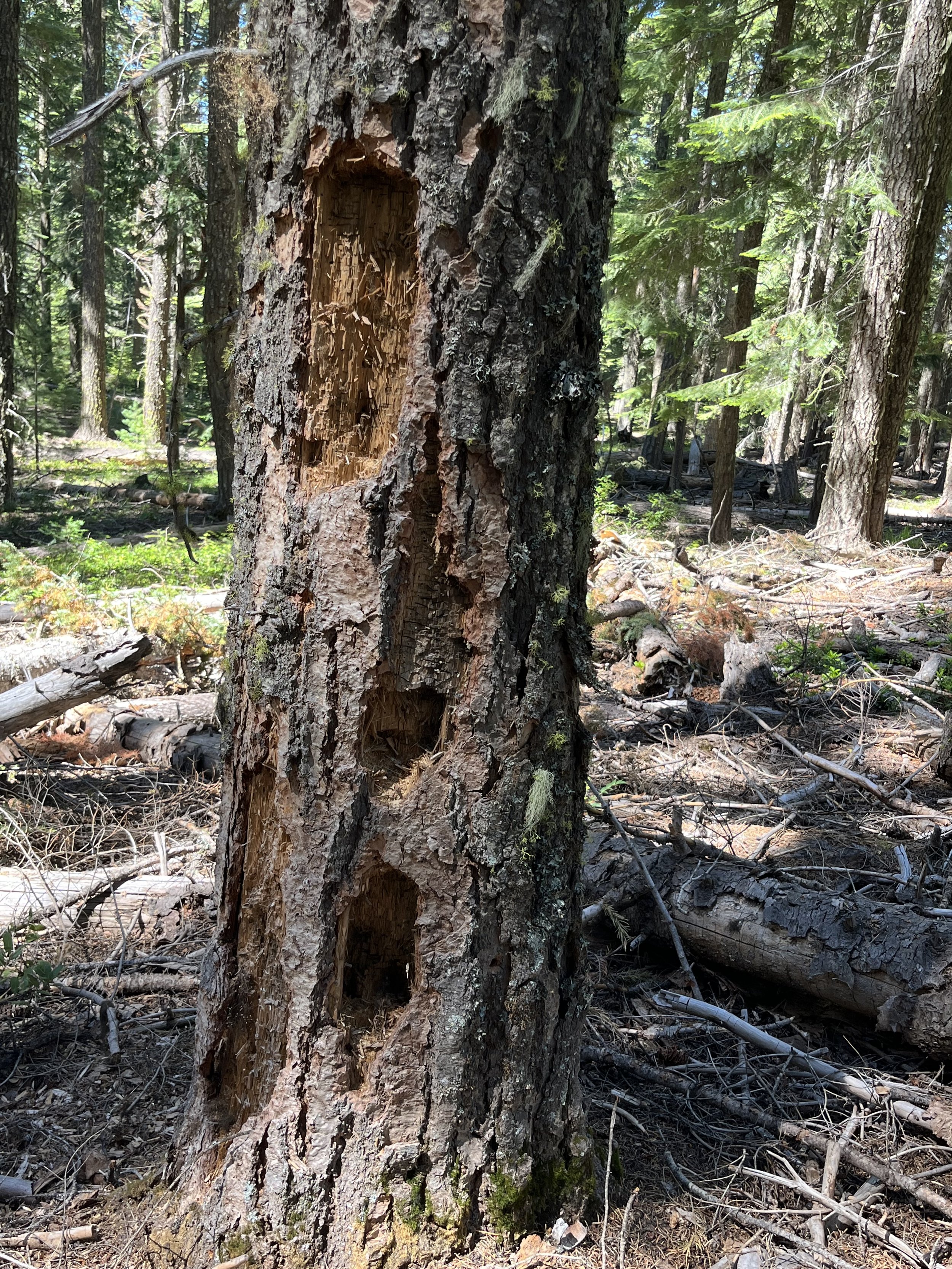Sunday Hike #2 – Wildlife of the Old Growth Stands, 6/26/2022
A lot can change in a week. Focusing on the weather changes: temperatures in the valley soared over 100˚F for the first time this year. Luckily for our June 26 Sunday Hike group, we were able to escape the heat and all the goings-on in town for a peaceful hike at higher elevation in the old growth forests of the northern portion of the Monument. Steve Godwin, BLM wildlife biologist, knows this area well after years of Spotted Owl research during his technician days. This was a great chance to learn about some of the species that need old growth forests to thrive, and how all the trees, plants, animals, and processes of the forest are deeply connected.
What makes a forest “old growth”? Steve tells us that the woods in our area are considered old growth if there have been no major unnatural changes (logging) for 80-100 years. We certainly walked past trees that have been alive for more than 100 years, but the stands we walked through were mostly second growth; the area had been logged in the past, like much of the forests of Oregon. Despite this disturbance, the forest has regenerated, and is now protected. Enormous Sugar Pines, Ponderosa Pines, and Douglas-firs towered above us, with Incense Cedar and White Fir filling in the gaps. Wind, especially during snowstorms, is now the main disturbance characterizing these woods. The presence of dead and downed limbs and trunks surrounding and even crossing the trail was astounding!
The massiveness of this coniferous forest and its tall trees contribute to its quietness, broken by the occasional call of a pileated woodpecker or the chirping of a Douglas squirrel. Steve used a Bluetooth speaker to call in a more elusive creature of the old growth: the Great Grey Owl. Though no one called back to answer our echoing hoots, this is their preferred habitat. A Great Grey Owl’s territory is about a square mile of tall, dense, old growth trees good for nesting and perching for hunting. Though there are plenty of creatures who prefer more open, edge habitats, there are some who cannot thrive without old growth woods. The Spotted Owl is another such species that many know as a mascot for anti-logging environmentalist efforts to protect old growth woods.
When walking in woods like these, something clicks for me about interconnectedness and resilience in a community. Steve points out a “living stump,” characterized by a cambium layer growing around and protecting dead heartwood. He mentions the roots of the trees of this forest, all intertwined, sending excess water and energy to the trees that need it most. Some trees, like White Firs, can tolerate shade and will pass their lives beneath the boughs of the overstory. Others, especially Pine species, need sunlight to survive well. A pine tree might stall as a seed or sapling for years until there is sufficient space and sunlight to shoot up and grow in the conditions it needs. It takes time to grow strong and rebound from clearcutting and other such massive changes to the landscape, to the community. The old growth forest is full of life, with stories and lessons to share.
Words and photos by Interpretive Ranger Sarah Martinez




